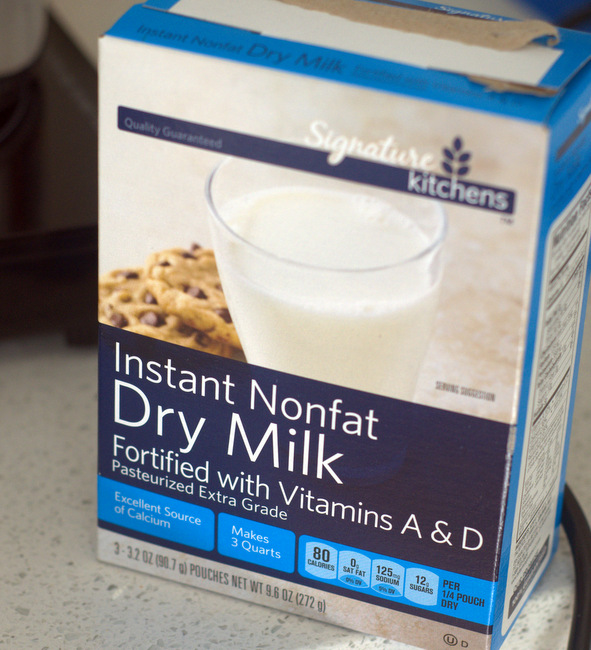
Milk is a liquid that is typically stored in your refrigerator and used for a wide variety of cooking and baking purposes, as well as as a beverage in its own right. There are several different types of milk out there with varied fat contents (skim, 2%, whole), varied water contents (evaporated milk) and added sugar (sweetened condensed milk), but one that you might be less familiar with is dry milk powder. Dry milk powder is made by dehydrating milk to remove all of the water and leave only the milk solids. Powdered milk has an extremely long shelf life and does not require refrigeration. Many different dairy products can be powdered, including buttermilk, but nonfat dry milk tends to be the most common choice. The low fat content of skim milk gives it an even longer shelf life than other dry milks, making it an appealing choice for grocers to carry and for you to tuck away at the back of your pantry.
Dry milk powder can be reconstituted with water. The packaging will have instructions that lay out how much water to use with the milk, but typically the ratio is 1/3 cup milk powder to 1 cup water. The reconstituted milk can then be used like fresh milk in a recipe. The dry milk can also be used as a powder, incorporated into a recipe along with the dry ingredients. This can add richness and tenderness to a bread or cake recipe without adding additional liquid. It has the same effect when added to frozen coffee drinks and smoothies, adding richness and producing a creamier drink without thinning out the recipe.






What do you think?